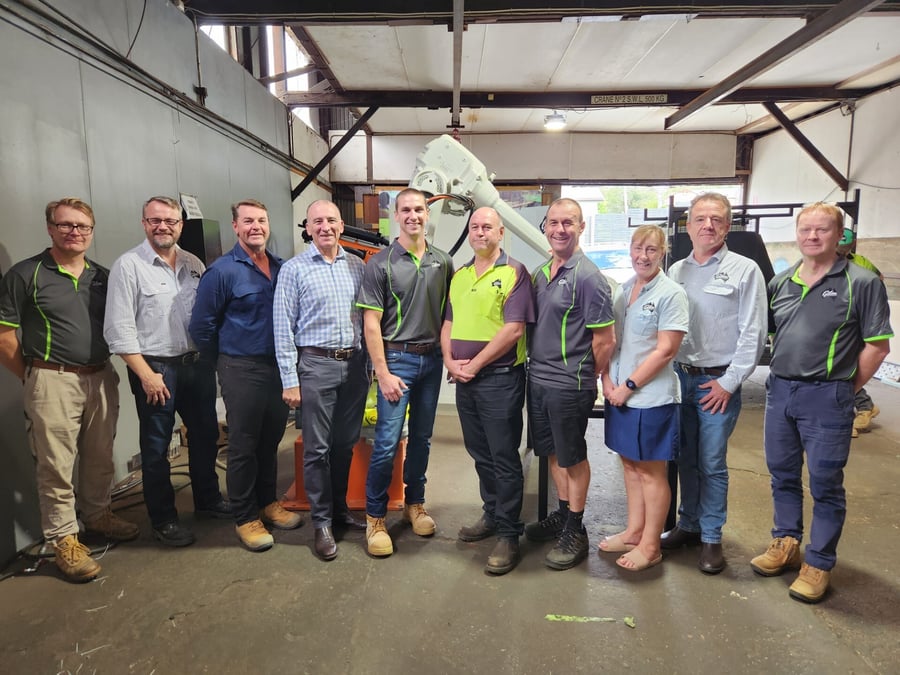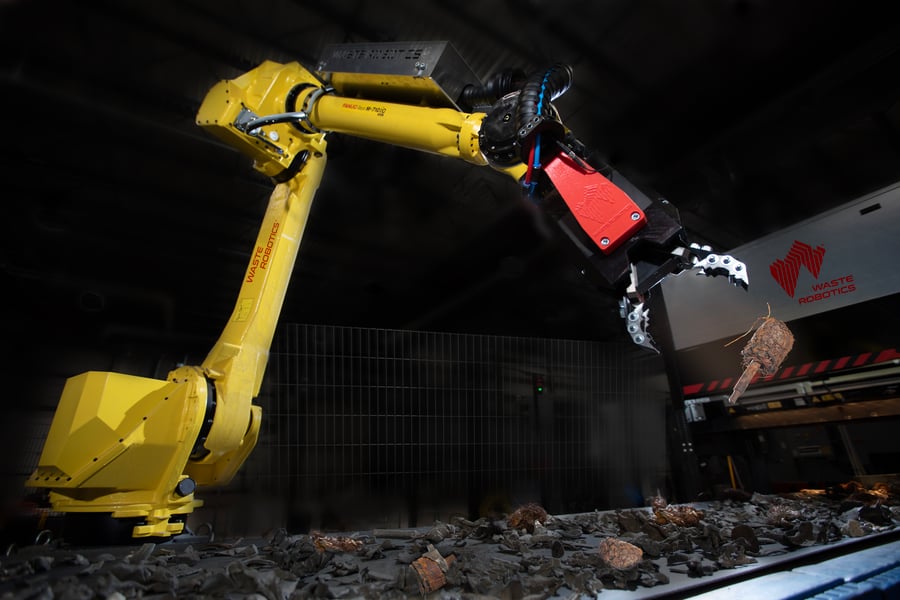Building Confidence in Robotic Sorting Decisions with Data
Investing in robotic sorting technology is a significant decision for waste management professionals. Waste streams are unpredictable, and sorting conditions fluctuate. Determining the most efficient robotic configuration can be challenging. While automation promises improved efficiency, reduced labor costs, and enhanced material recovery, making the right investment requires a precise, data-driven approach.
The Robot Validator is designed to remove uncertainty from the decision-making process. By integrating Greyparrot’s AI-powered camera analytics with Waste Robotics’ sorting technology, this tool provides a comprehensive evaluation of robotic performance. It enables waste operators to compare different configurations based on real-world data, ensuring informed and confident investment decisions.
A Smarter, Data-Driven Approach to Robotic Sorting

This figure illustrates the result of a scenario, showing that this setup achieves a 15% improvement in material purity (before/after comparison). The number of picks per robotic arm is displayed on the side, along with a progress bar indicating the occupancy rate per arm. The occupancy rate is approximately 70% per arm, suggesting that the system has the capacity to handle more material if needed.
Waste sorting facilities operate in ever-changing environments where material composition, contamination levels, and processing speeds shift continuously. Relying on industry averages or trial-and-error approaches can lead to inefficiencies and missed opportunities. The Robot Validator eliminates this uncertainty by leveraging real-time material analytics to model sorting performance across different operational scenarios.
This tool provides operators with actionable insights, including:
- Material recovery efficiency – How much valuable material is captured versus lost?
- Sorting speed and accuracy balance – How does increasing speed impact purity levels?
- Optimal robot configuration – What combination of robots delivers the best efficiency for a given waste stream?
Instead of estimations, operators receive quantifiable data that reflects the actual impact of automation on their sorting operations.
Real-World Performance Insights

A recent evaluation using the Robot Validator compared three robotic configurations, revealing valuable insights into performance trade-offs between M10 robots (longer reach, heavier payload, slower picks per minute) and LR Mate robots (shorter reach, lighter payload, faster picks per minute):
This scenario-based approach helps facilities fine-tune their automation strategies by testing different robotic setups in a controlled environment before deployment. For instance, a facility processing mixed recyclables can use the Robot Validator to assess whether a combination of M10 robots and LR Mate robots will optimize both sorting speed and material purity, reducing operational inefficiencies and maximizing recovery. Instead of over-investing in unnecessary equipment, decision-makers can allocate robots where they deliver the most value.
Enhancing Efficiency with Data-Backed Decisions
For waste operators, automation is not simply about adding more robots about strategic deployment. The Robot Validator connects investment with the outcome, ensuring that robotic sorting decisions are based on measurable performance indicators rather than assumptions or guesswork.
As the waste management industry continues evolving, data-driven decision-making will be essential in optimizing material recovery and operational efficiency. By providing clear and practical insights, the Robot Validator helps waste facilities develop an efficient and effective automation strategy that meets both operational and financial goals.
Subscribe to Our Newsletter
Related posts

Waste Robotics and AE Gibson & Sons Announce Strategic Partnership to Advance AI-Powered Waste Sorting in Australia


